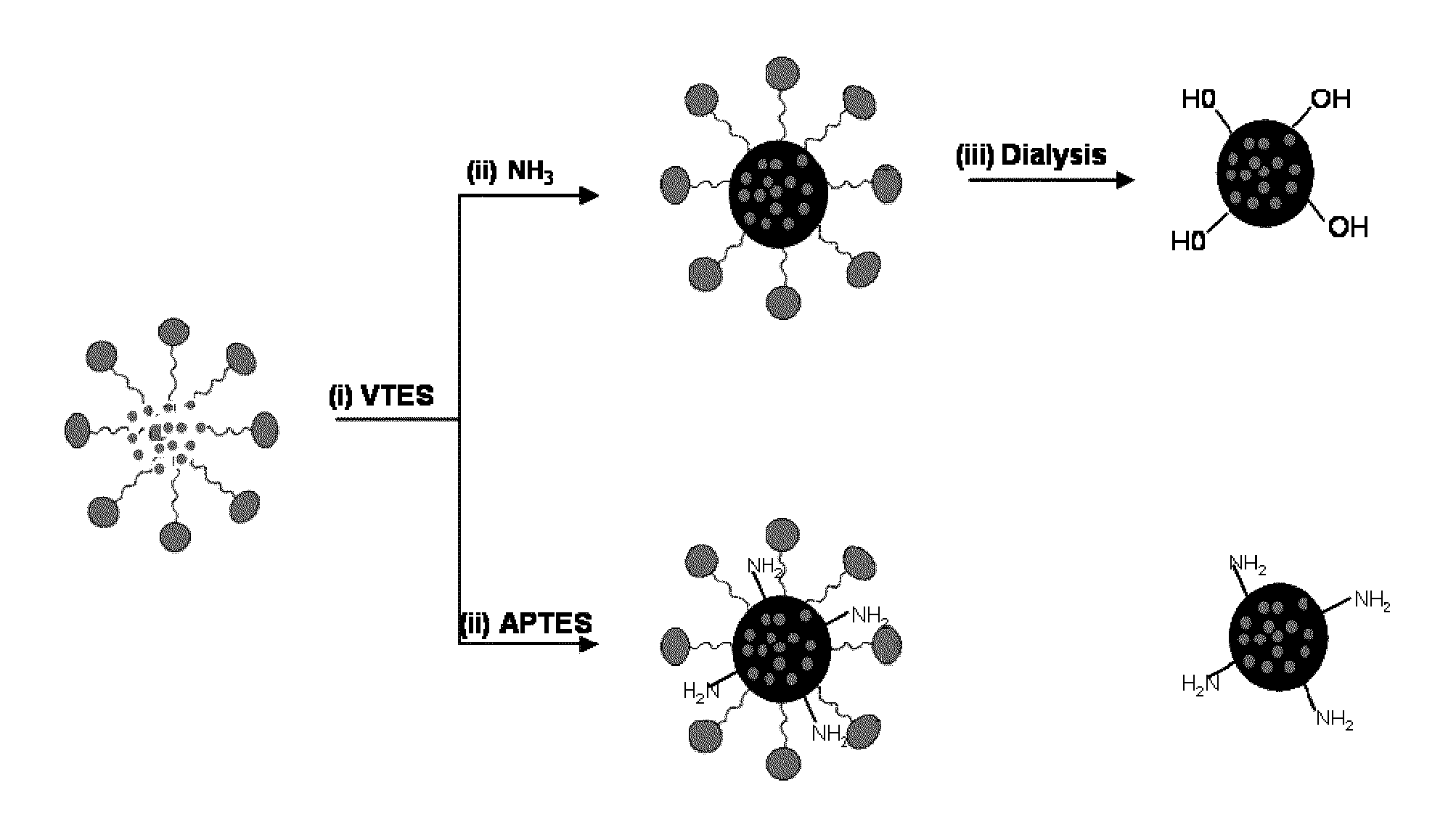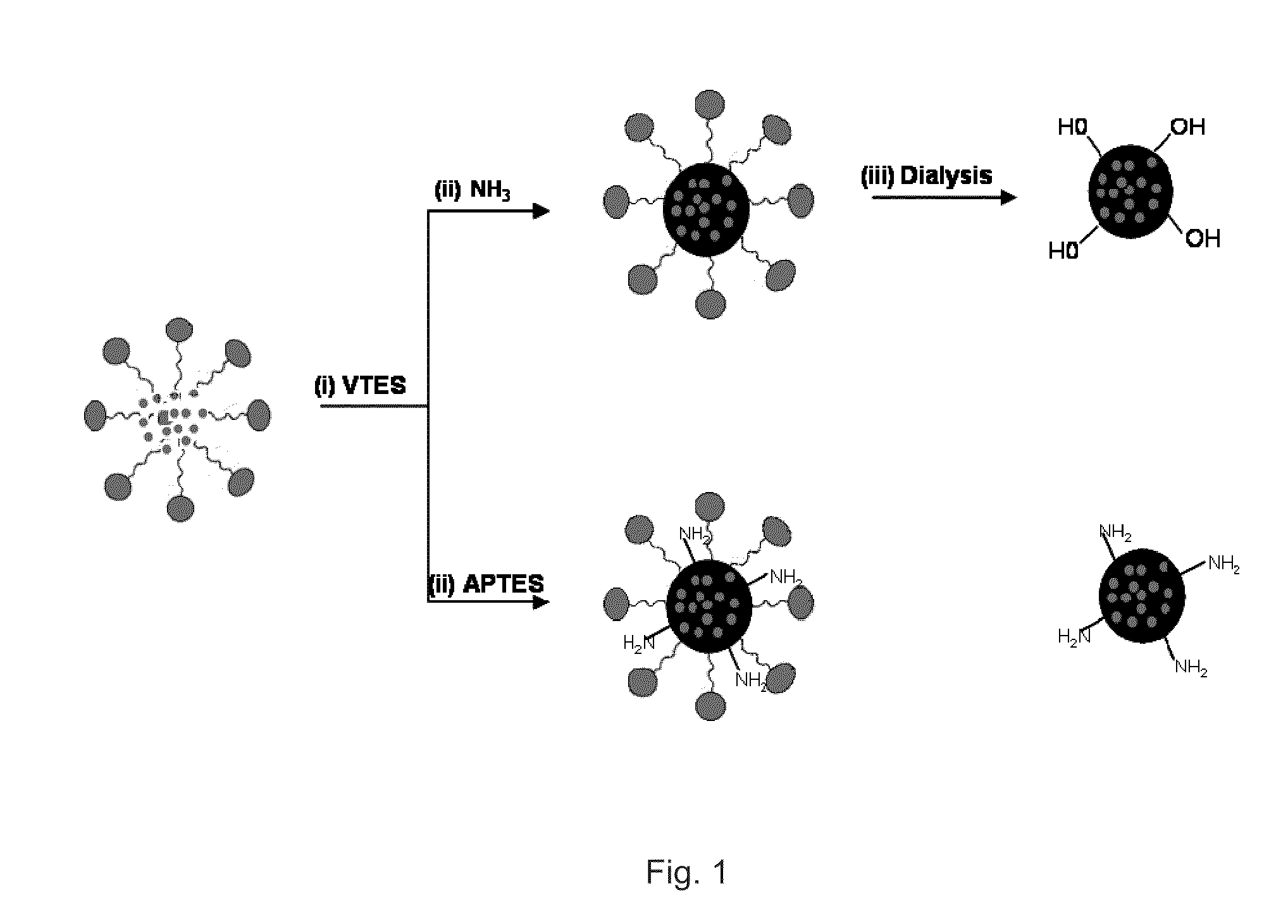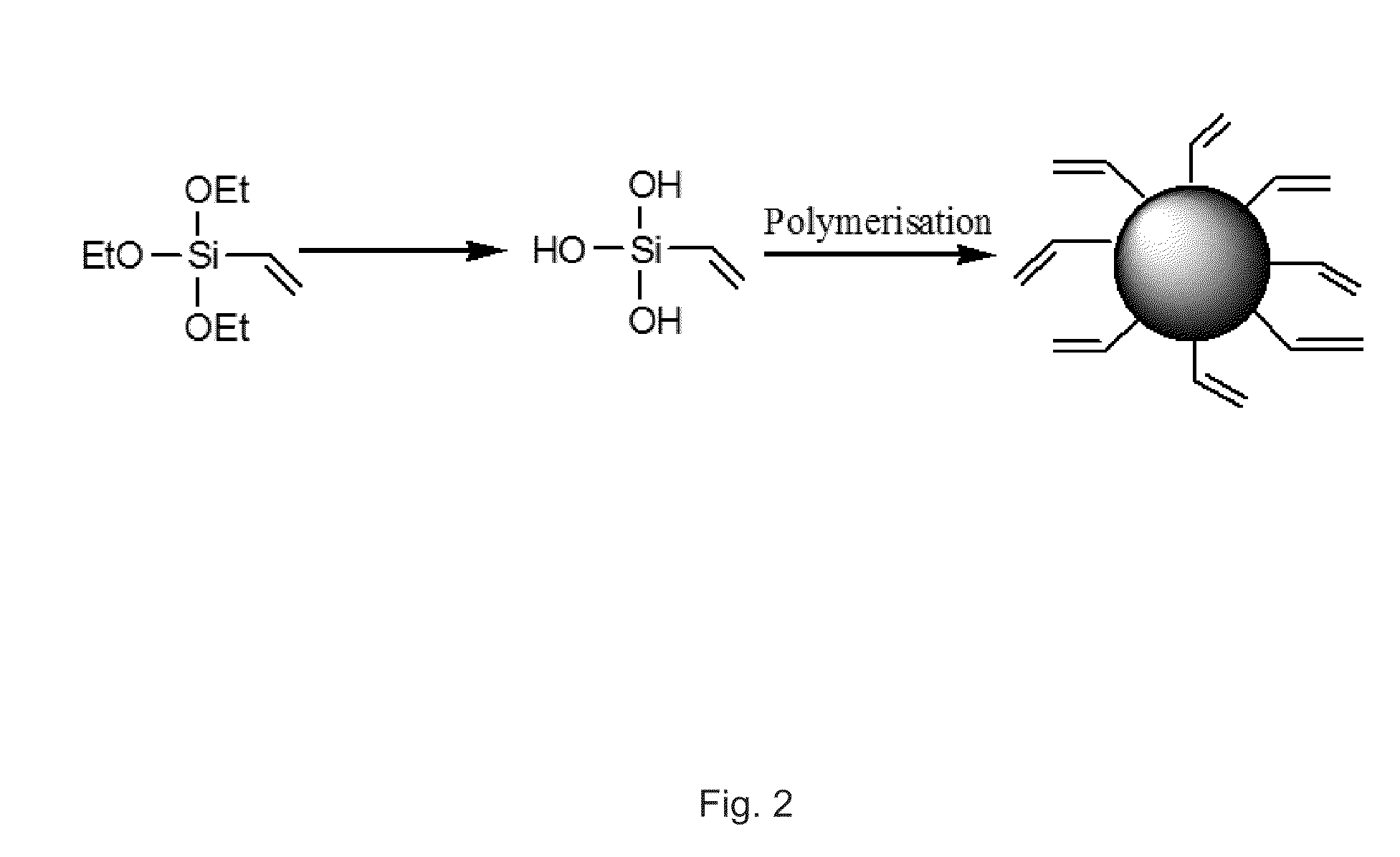Silica nanoparticles postloaded with photosensitizers for drug delivery in photodynamic therapy
a nanoparticle and photodynamic therapy technology, applied in the direction of pharmaceutical delivery mechanism, powder delivery, energy modified materials, etc., can solve the problems of insufficient accumulation selectivity of diseased tissues, still has problems to be resolved, and cannot be simply injected intravenously, so as to achieve the effect of increasing efficiency
- Summary
- Abstract
- Description
- Claims
- Application Information
AI Technical Summary
Benefits of technology
Problems solved by technology
Method used
Image
Examples
Embodiment Construction
[0061]As previously discussed, in accordance with the invention, silica-based nanoparticles are provided containing at least one post loaded photosensitizer. The photosensitizer is usually a tetrapyrrole-based compound, a phthalocyanines or naphthanocyanines with and without fused ring systems and derivatives of all the above. The photosensitizer is preferably related to porphyrins, chlorins, bacteriochlorins, benzochlorins, benzoporphyrin derivatives, pheophorbides including pyropheophorbides. Specific examples of such tetrapyrollic photosensitizers may be found in numerous U.S. patents, e.g. U.S. Pat. Nos. 5,864,035; 5,952,366; 6,533,040; 6,624,187; and RE39,094;
[0062]The nanoparticle may also include covalently linked imaging agents, e.g. radionuclides, magnetic resonance (MR) and fluorescence imaging agents. The imaging agents and photosensitizers may be at a periphery (surface) of the nanoparticles to increase efficiency.
[0063]Target-specific nanoparticles may be provided by in...
PUM
| Property | Measurement | Unit |
|---|---|---|
| weight percent | aaaaa | aaaaa |
| weight percent | aaaaa | aaaaa |
| weight percent | aaaaa | aaaaa |
Abstract
Description
Claims
Application Information
 Login to View More
Login to View More - R&D
- Intellectual Property
- Life Sciences
- Materials
- Tech Scout
- Unparalleled Data Quality
- Higher Quality Content
- 60% Fewer Hallucinations
Browse by: Latest US Patents, China's latest patents, Technical Efficacy Thesaurus, Application Domain, Technology Topic, Popular Technical Reports.
© 2025 PatSnap. All rights reserved.Legal|Privacy policy|Modern Slavery Act Transparency Statement|Sitemap|About US| Contact US: help@patsnap.com



